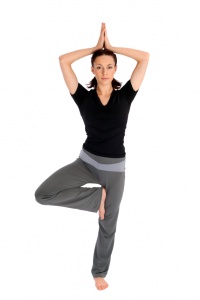
Inside Yoga 277 (9/9/2019)
Yoga can be appear to be many things to many people with so many interpretations of what kind of yoga practice a person can practice creating a picture that can appear complex and confusing. In order to simplify the main objective of yoga there is one word – stillness.
At the heart of any yoga practice is the aim of achieving stillness in both our mind and our body.
The second line of Patanjali’s yoga sutras states that yoga is the cessation (or controlling) of the fluctuations of the mind. In other words, yoga’s goal is to quieten the chatter in our head, the distractions of our mind and everything else which goes on within our cranium.
As we are a complex organism it does not stop with our mind, because there is our body as well, and this needs to be quietened as well as the mind. A restless, tired or sick body will adversely affect our mind, and equally our mind affects our body… they are not separate in any way even though many of us live so much in our heads, as the expression goes, it is no wonder the body feels alien and remote.
Yoga, the word, translates as union, so what I describe above is the understanding that the solution is to unite body and mind in one healthy balanced union.
This is where the practice comes in because we do live in a moment to moment existence and as a result what we solve one minute – that is, establishing a blissful stillness – is not guaranteed to last into the next. We need to remain vigilant and determined to keep returning to the stillness of yogic union.
Through practice we do find it easier to return to stillness, and also find that these moments of union will last longer, but nothing lasts forever, so we keep practising.
What is important to understand with the idea of stillness being the primary focus in yoga is that it does not matter if we do not feel flexible or strong, because stillness can be established regardless. Through practising the physical exercises called yoga asanas we will become stronger and more flexible which is seen as a bonus but not the primary objective of practice.
Each and every time we practice an exercise we are asked to focus on being still within the posture, and this is why we learn to hold positions physically, instead of constantly moving, and at the same time, keep the mind focussed on the breath and body. Stillness is the key.
And in case you are now thinking, hold on, what about flow in yoga practice called vinyasa? Even with yoga practices which focus on a flowing sequence of postures, we learn how to maintain a mental stillness while moving between postures and holding still each asanas even if it is for just five breaths. Moving into stillness is the key, not moving for the sake of moving.
For example, it is wrong to refer to exercises in a yoga class as “moves” or “yoga moves” which I am aware that some people do say. The word “asanas” used to describe yoga exercises translates as posture or position, not a movement. We move between asanas.
Once stillness is established we are more likely to feel clarity, bliss, well-being and all the positive feelings we associate with yoga practice. Importantly yoga practice offers us the tools and techniques to conjure up and establish these positive states, and its practice stabilises our ability to maintain a balanced sense of well-being for longer periods.
Related articles:
https://www.yogabristol.co.uk/2017/10/03/where-has-the-stillness-gone/
Your Comment: Let me know what you think. See reply panel below or email me, gary@yogabristol.co.uk
